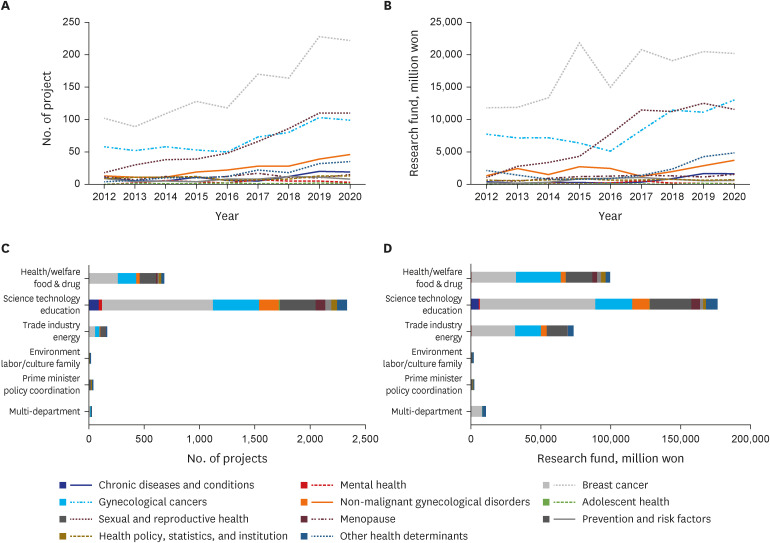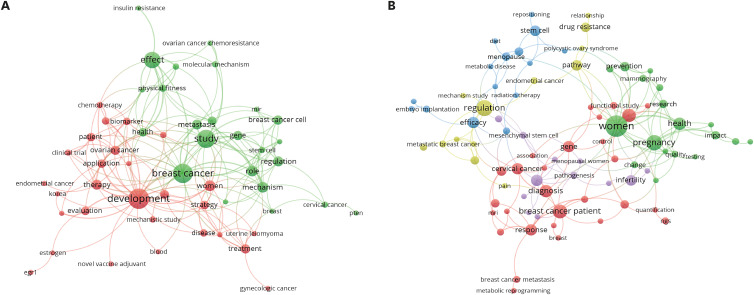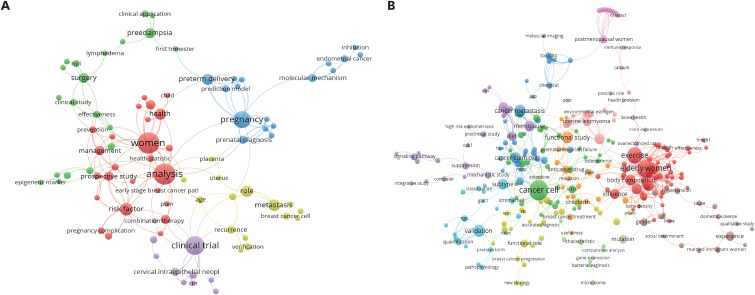7. Ruiz-Cantero MT, Vives-Cases C, Artazcoz L, Delgado A, García Calvente MM, Miqueo C, et al. A framework to analyse gender bias in epidemiological research. J Epidemiol Community Health. 2007; 61 Suppl 2(Suppl 2):ii46–ii53. PMID:
18000118.
8. Crandall CJ, Livingston E. Women’s Health: a new JAMA clinical insights series. JAMA. 2019; 321(17):1676. PMID:
30977760.
9. Regensteiner JG, Reusch JE. Sex differences in cardiovascular consequences of hypertension, obesity, and diabetes: JACC Focus Seminar 4/7. J Am Coll Cardiol. 2022; 79(15):1492–1505. PMID:
35422246.
10. Wizemann TM, Pardue ML. Exploring the Biological Contributions to Human Health: Does Sex Matter? Washington D.C., USA: National Academic Press;2001.
11. Institute of Medicine (US) Committee on Women’s Health Research. Women’s Health Research: Progress, Pitfalls, and Promise. Washington D.C., USA: National Academic Press;2010.
12. Lim D, Lee J, Kim H, Park S, Lee H, Min J, et al. A cross-national comparative review of women’s health based on law, organization and research field and fund. J Korean Soc Matern Child Health. 2014; 18(1):13–23.
13. Park H. Strategy and Planning on Women’s Health Research Development. Sejong, Korea: The Ministry of Health and Welfare;2013.
14. Health Chosun Editing Division. How far does petit plastic surgery go? Vaginal filler treatment for women. Health Chosun;2019. 09. 26.
15. Kim D, Kim Y, Tong C, Jung D, Kim S. Gender and Health Inequality in Korea: Focusing on Body Obsession and Aesthetic Plastic Surgery. Seoul, Korea: Korean Women’s Development Institute;2019.
16. Kim TH, Lee HH, Moon WS. Health care for transwoman (male to female). J Korean Soc Menopause. 2013; 19(2):45–53.
17. Park GE. Disclosure of sanitary pad’s safety assessment results over 1 year. Women’s civil society organizations visits to the Presidential Transition Committee of Korea. Hankyoreh;2022. 04. 15.
18. Kim YH. Married Immigrant Women: Health Issues and Policy Challenges. Suwon, Korea: Gyeonggido Women and Family Foundation;2018.
19. Kim SH. Women with disabilities: current status and policy issues. Health Welf Policy Forum. 2018; 263(2):6–20.
20. Hwan BR, Cho H, Oh SM, Kim JJ. A study on the influence of working environment of female care service workers on subjective health: focusing in Busan region. Soc Sci Res. 2018; 34(3):99–124.
21. Park KH, Kim MH. Caregiver women in their 50s and 60s: ‘free service’ in a wait-and-see country. Hankyoreh;2018. 03. 18.
22. Ryu KJ, Yi KW, Kim YJ, Shin JH, Hur JY, Kim T, et al. Machine learning approaches to identify factors associated with women’s vasomotor symptoms using general hospital data. J Korean Med Sci. 2021; 36(17):e122. PMID:
33942581.
24. Carrington PJ, Scott J, Wasserman S. Models and Methods in Social Network Analysis. New York, NY, USA: Cambridge University Press;2005.
25. Korea Health Industry Development Institute. Healthcare R&D Basic Statistics (2017.12.). Osong, Korea: Korean Health Industry Development Institute;2017.
26. Korea Health Industry Development Institute. Healthcare R&D Statistics (2022.12.). Osong, Korea: Korean Health Industry Development Institute;2022.
27. Jeong K, Yoon J, Cho HJ, Kim S, Jang J. The relationship between changes in the korean fertility rate and policies to encourage fertility. BMC Public Health. 2022; 22(1):2298. PMID:
36482452.
28. The Ministry of Health and Welfare. The Ministry of Health and Welfare R&D Integration Implementation Plan in 2021. Sejong, Korea: Ministry of Health and Welfare;2020.
29. Song HJ, Kim JH. Analyzing the Healthcare R&D Government Investment Management System: Enhancing Operational Governance and Public Utilization. Seoul, Korea: National Assembly Research Service;2020.
30. Jo W. Funding sources and breast cancer research frame. PLoS One. 2020; 15(8):e0238026. PMID:
32834005.
31. Sella N, Hamy AS, Cabeli V, Darrigues L, Laé M, Reyal F, et al. Interactive exploration of a global clinical network from a large breast cancer cohort. NPJ Digit Med. 2022; 5(1):113. PMID:
35948579.
32. Pate L, Desmedt C, Metzger O, Burgess Hutcheson L, Turner C, Freeney S, et al. How researchers, clinicians and patient advocates can accelerate lobular breast cancer research. Cancers (Basel). 2021; 13(13):3094. PMID:
34206261.
33. Plank-Bazinet JL, Bunker Whittington K, Cassidy SK, Filart R, Cornelison TL, Begg L, et al. Programmatic efforts at the National Institutes of Health to promote and support the careers of women in biomedical science. Acad Med. 2016; 91(8):1057–1064. PMID:
27191836.
34. Jung YS, Kim YE, Park H, Oh IH, Jo MW, Ock M, et al. Measuring the burden of disease in Korea, 2008-2018. J Prev Med Public Health. 2021; 54(5):293–300. PMID:
34649391.
35. Feletto E, Grogan P, Vassallo A, Canfell K. Cancer costs and gender: a snapshot of issues, trends, and opportunities to reduce inequities using Australia as an example. Climacteric. 2019; 22(6):538–543. PMID:
31378097.
36. Tolwin Y, Gillis R, Peled N. Gender and lung cancer-SEER-based analysis. Ann Epidemiol. 2020; 46:14–19. PMID:
32532368.
37. Kim SE, Paik HY, Yoon H, Lee JE, Kim N, Sung MK. Sex- and gender-specific disparities in colorectal cancer risk. World J Gastroenterol. 2015; 21(17):5167–5175. PMID:
25954090.
39. Hankivsky O, Springer KW, Hunting G. Beyond sex and gender difference in funding and reporting of health research. Res Integr Peer Rev. 2018; 3(1):6. PMID:
30167330.
40. Park EJ, Kim JS, Yoon S, Yoon HW, Lee YS, Kwak RS, et al. Study on the R&D System in Healthcare. Sejong, Korea: Korea Institute for Health and Social Affairs;2013.
41. The Ministry of Health and Welfare. Ministry of Health and Welfare White Book 2018. Sejong, Korea: The Ministry of Health and Welfare;2019.
43. Hall J, Chawla M, Watson D, Jacob CM, Schoenaker D, Connolly A, et al. Addressing reproductive health needs across the life course: an integrated, community-based model combining contraception and preconception care. Lancet Public Health. 2023; 8(1):e76–e84. PMID:
36603914.
45. Benyamini Y, Todorova I. Women’s reproductive health in sociocultural context. Int J Behav Med. 2017; 24(6):799–802. PMID:
29150752.
46. Willmes CG, Beymer M. Fruitful futures for reproductive health. Trends Mol Med. 2021; 27(8):713–714. PMID:
34210597.
47. Nho JH. The evolvement of sexual and reproductive health policies in Korea. Korean J Women Health Nurs. 2021; 27(4):272–274. PMID:
36311457.
48. Park E, Kim H. Experience of late-middle-aged women who reside in small and medium-sized cities in becoming psychologically mature women. Osong Public Health Res Perspect. 2015; 6(3):159–163. PMID:
26430612.
49. Ahn S, Lee EJ, Jun EM, Kim M, Kim S, Song JE, et al. Research trend of women’s health in Korean nursing journals (2010~2015). Korean J Women Health Nurs. 2018; 24(3):276–286.
50. Choi Y, Lee S. Trends in research on women’s health: using the keyword network analysis. J Humanit Soc Sci. 2021; 12:2085–2095.
52. Pinn VW. The role of the NIH’s Office of Research on Women’s Health. Acad Med. 1994; 69(9):698–702. PMID:
8074758.
53. Rhee Y. Study on Exploring Women’s Health Issues and Research Planning for Korean Women. Sejong, Korea: Ministry of Health and Welfare;2016.
54. Douthard R, Whitten LA, Clayton JA. Research on women’s health: ready for the future. J Womens Health (Larchmt). 2022; 31(2):133–144. PMID:
35147467.
55. Kim Y, Chung J, Jun H, Chun H, Choi S. Women’s Health Promotion in Other Countries and Korean Policy. Seoul, Korea: Korean Women’s Development Institute;2007.
56. Nijjar SK, D’Amico MI, Wimalaweera NA, Cooper N, Zamora J, Khan KS. Participation in clinical trials improves outcomes in women’s health: a systematic review and meta-analysis. BJOG. 2017; 124(6):863–871. PMID:
28194870.
57. Craddock E. A qualitative UK study exploring counterpublic engagement of marginalized women via a Women’s Health Network. Health Promot Int. 2022; 37(4):daac124. PMID:
36107001.










 PDF
PDF Citation
Citation Print
Print





 XML Download
XML Download